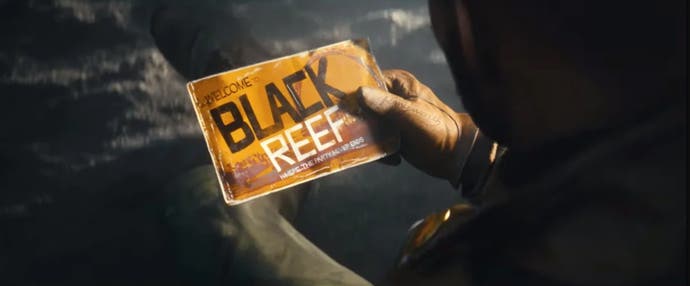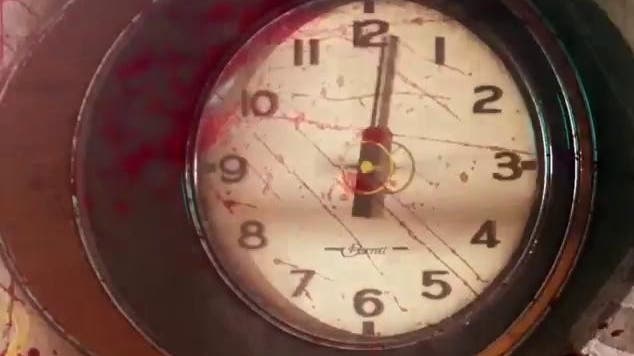How time-loop games offer escape from a world that is running out of time
Once more.
Timeloop games, in which players try to find their way out of a cycling series of events, are enjoying something of a renaissance. It's as if the industry were caught in a Groundhog Day scenario devoted to the creation of Groundhog Days. Last week's E3 announcements alone gave us Luis Antonio's 12 Minutes, in which players endlessly relive their deaths at the hands of a mysterious housebreaker, and Arkane's Deathloop, in which two assassins vie for dominance of one and the same day on a swishly late-70s island base.
These follow hard on the heels of Mobius Digital's The Outer Wilds, possibly my game of the year, whose clockwork merry-go-round of a solar system is never further than 20 minutes from self-combustion. Last summer saw the release of All Walls Must Fall, a game about scouring the discos of 80s Berlin for a nuclear bomb, and Minit, which gives you 60 seconds to lift a curse that strips those seconds away. The summer before there was The Sexy Brutale, a gory masquerade in which every death has its counterpoint in a frightfully memorable score.

How to account for the popularity of this premise? Well, one key draw may be that timeloop games are relatively resource-efficient. They allow developers of modest means to squeeze many hours of play from a single set of props and areas, like a whole colony of rabbits from a magician's hat. A second explanation is that timeloops are great fun to peg out if, like the creators of The Sexy Brutale, you're the kind of designer who gleans copiously from film or theatre. They offer space for baroque dramatic flourishes or Shyamalan-esque narrative trickshots that would be ignored, or spoiled, in a game where time waits on the player. There's also the question of nostalgia, perhaps: among the earliest practitioners of the form is The Legend of Zelda: Majora's Mask, which winds and rewinds a planetary collision. But beyond all that, and at the risk of stuffing words into the mouths of the developers concerned, I think timeloop games speak to a diffuse and distinctly 21st century anxiety about the concept of time at large. To illustrate this, let's take a fresh look at one of the finest time-loop games ever made.
A little while ago I was working on a piece about the art of selling roguelikes to people who dislike the repetition inherent to roguelikes. In the process I spoke to Justin Ma, designer of kamikaze Star Trek sim FTL and, most recently, Into the Breach - a blend of Gundam and chess that begins after the world's end, with players parachuting mechs into the past to check (if not mate) a burrowing insect swarm. Fail a mission, and you're automatically returned to the dawn of the bug uprising, erasing your efforts save for a single fortunate pilot and some persistent unlockables. You lick your wounds and try, try again, till at long last you cleanse every continent in one fell swoop. These repeated erasures make beating Into the Breach a strange and melancholy event: all those near-victories, those almost-brilliant ploys and valiant sacrifices reduced to false memories, scuffed out of history like streets or buildings deemed no-go areas by some gentrified mapping tool.

Time is Into the Breach's silver bullet, the quality that lifts it above other turn-based tactics games, but also, in a way, the thing that haunts it. Each match lasts a set number of turns, while enemies burst through the soil without cease. Success is thus not about the scorched-earth pedantry of killing every last foe, but fitting your pieces into that window of opportunity as deviously as you do the confines of the board - doing just enough over a short span to postpone defeat, again and again. “We really wanted it to feel like every turn matters,” Ma told me.
Into the Breach's handling of time is motivated by more than a desire for snappiness or elegance, however. As Ma explains, it is shaded by his awareness of the commodification of time in a networked world where indirect monetisation is king - “the concept that how you make money, what is valuable to society is literally people's time”. Into the Breach's miserliness about how much progress you can carry over between loops is, on some level, a reaction against the effect this commodification has had on our ideas of play. It reveals Ma's mistrust as a designer for the insistence on some kind of proportionate reward, be it a level-up, a loot drop or a multiplier, for every hour that players “invest”.
The literal coining of our time, the exhaustive and exhausting quantifying of productive or non-productive days, hours and moments, has arguably led to something of a mental health epidemic. It stokes and maintains a society-wide fog of anxiety and alienation whereby every unit of time not “spent” usefully is cause for self-reproach. This fog has thickened as the concept of climate crisis has sunk into the tissues of daily life, care of a media environment saturated with talk of doomsday clocks, tipping points, event horizons and best or worst-case prognoses. The increasing likelihood of catastrophe redoubles the pressure to spend one's time well, as the industries and corporations responsible for the largest share of carbon emissions seek to deflect that responsibility onto individual consumers. If the world is melting, or so the song goes, it is not because the world is in desperate need of broad structural change - it is because you, the person reading this, are not vegan enough, drive too much, don't recycle enough... and the clock is ticking.

Even as the anxiety about using our time gainfully has increased, the devices, platforms and experiences we rely on for work, communication and recreation have gotten better and better at filching it from us. Games, especially, have grown ravenous for our time, adept at intercepting and absorbing it like dolphins coralling a school of fish, as the ethos of the game-as-service calcifies into ubiquity. Consider how Overwatch's excitable lobby theme tempts you to settle for one more round - quit the game, and you'd be interrupting the tune! - the notifications about player rivalries that reel us back into games like The Crew 2, or the gacha-style mechanisms that turn otherwise middling shooters into habits. There's another kind of loop to consider, here: the infamous "gameplay loop" of task, completion and reward, a loop that is designed to spin on forever where the timeloop game is designed to be broken.
It's a stretch to apply all this directly to the workings of Into the Breach, but as Ma himself acknowledged, there are traces of these ideas in the game's exquisite strictness about time. "There was a kind of 'death of the author' moment that I enjoyed," he recalled. "Somebody left me a comment that the worldview of Into the Breach is essentially: 'we have the ability and knowledge to save everything, to be able to fix things, but there is simply not enough time'. Somebody said this and I thought: you know, that kind of is my worldview, that is kind of how I perceive things." I can't help but wonder if the same is true of the creators of Minit, The Outer Wilds or Deathloop. These experiences occupy markedly different worlds, but they all reflect a dread of squandered time that increasingly defines the one we live in. And if they have no answers to offer, they at least provide some kind of consolation: the fantasy of having all the time we need to identify, finally, the precise expenditure of our time necessary to stave off destruction.









